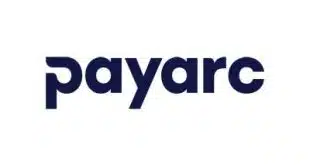We are all living digitally infused lives as a result of the pandemic, and as the promise of a vaccine suggests that this may end in the coming year, the question is: will the changes stick?
One area of keen interest to retailers and the payments industry is mobile payments, specifically, payments made at the point of sale with a mobile device. This is different from mobile ordering or shopping, because in those cases, the payment is still made with a credit, debit, or prepaid card. (There are cases where they converge, and we’ll come back to that.)
Mobile payments have seen a boost since the pandemic, though the data remain a little fuzzy because mobile transactions are often seen as “contactless transactions,” and it is not always clear if they involved a phone or card. For example, in April Visa reported that “31 million Americans tapped a Visa contactless card or digital wallet in March 2020, up from 25 million in November, with overall contactless usage in the U.S. growing 150% since March 2019.”
There are some specific signs pointing to investment and growth in mobile payments. In July, PayPal announced that it had launched a QR code app to allow people to use their PayPal and Venmo balances for mobile payments in 8,200 stores across the country (“The Sudden Ascent of QR Codes,” October). PayPal also struck a deal with InComm to bring the technology to other retailers.
However, the growth and investment in these tools are no guarantee that they will last beyond the present circumstances. As Claire Greene, a payments-risk expert at the Atlanta Fed, told Digital Transactions News in July, it is too soon to declare a permanent shift while we are still dealing with the pandemic. Old habits and merchant-acceptance costs could change how both individuals and merchants view mobile payments in the future.
Another headwind may come from the growth of options. Shoppers using their phones for communicating, navigating, or photographing may not want to sort through multiple payment options and may decide instead to reach for their cards. Also, uncertainty over whether a particular payment tool is accepted could make shoppers shy away from the potential embarrassment of using the wrong one.
Nonetheless, once the habit of using the phone to pay is ingrained, many people will continue to make it their default even after the Covid-19 pandemic has subsided. One area where retailers and mobile-payments providers have an opportunity lies in bringing payments together with other tools in a single app. Perhaps the most successful exemplar of this approach is Starbucks, which combines loyalty, ordering, and payments into one app. In an October earnings call, the company said mobile-ordering transactions increased from 18% of the total to 24% from the second to the fourth quarter.
Because people are being forced to adapt to new ways of shopping and making payments, now may be the time for retailers and issuers to try new tools and programs.
For example, the growth of contactless and mobile payments might give wearables new momentum. Previous attempts to embed payments into wearable devices delivered mixed results. Perhaps the most successful has been Disney’s Magic Band, which gives wearers the ability to complete payments as they tour the parks. But wearables—watches most likely, but perhaps even rings or other jewelry—could gain traction as contactless acceptance rises and people begin to grow accustomed to form factors other than cards. Context will be critical, but there is room for innovation.
However the disruptions play out, we will see a new American wallet after Covid-19.
—Ben Jackson, bjackson@ipa.org





